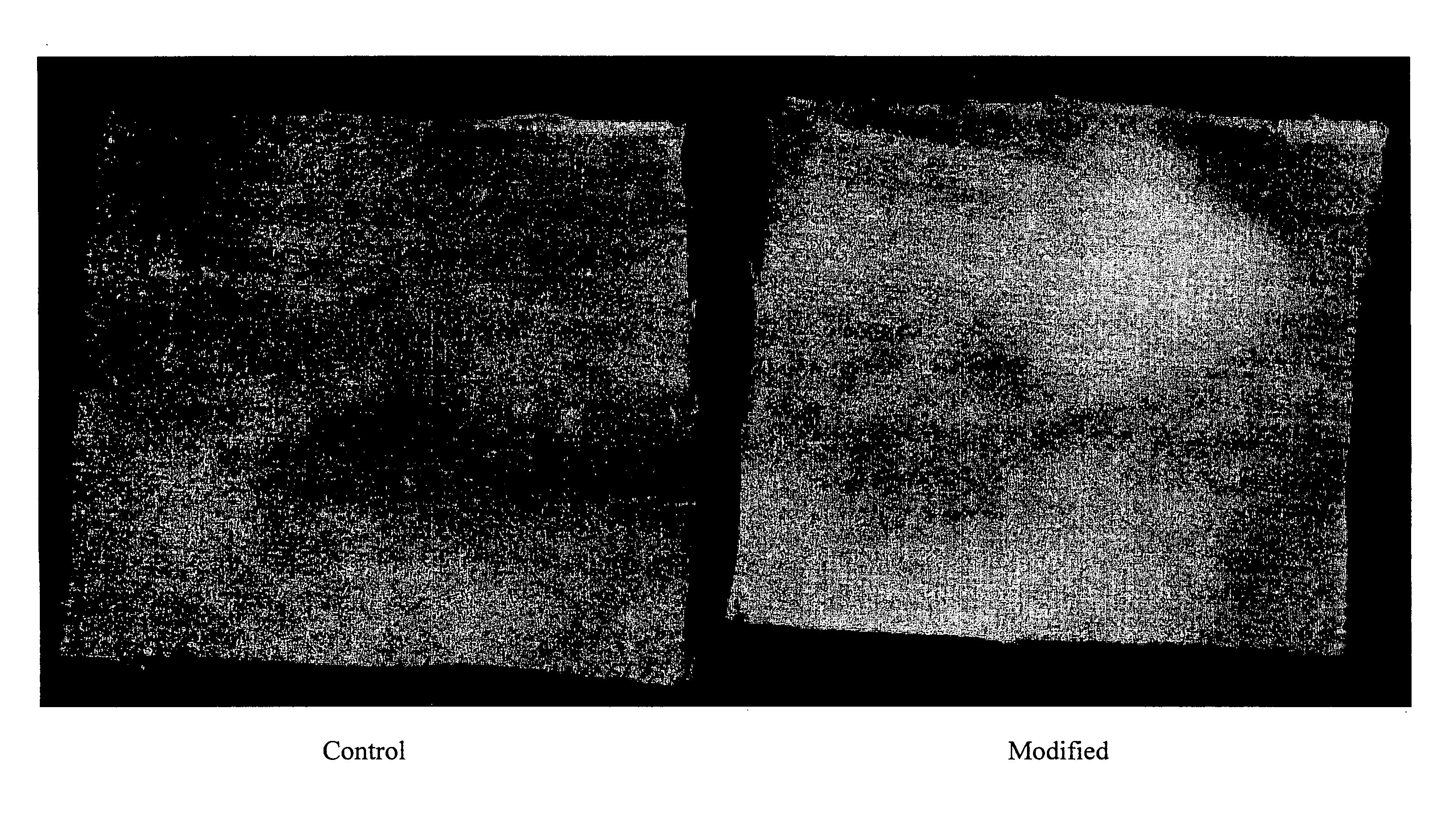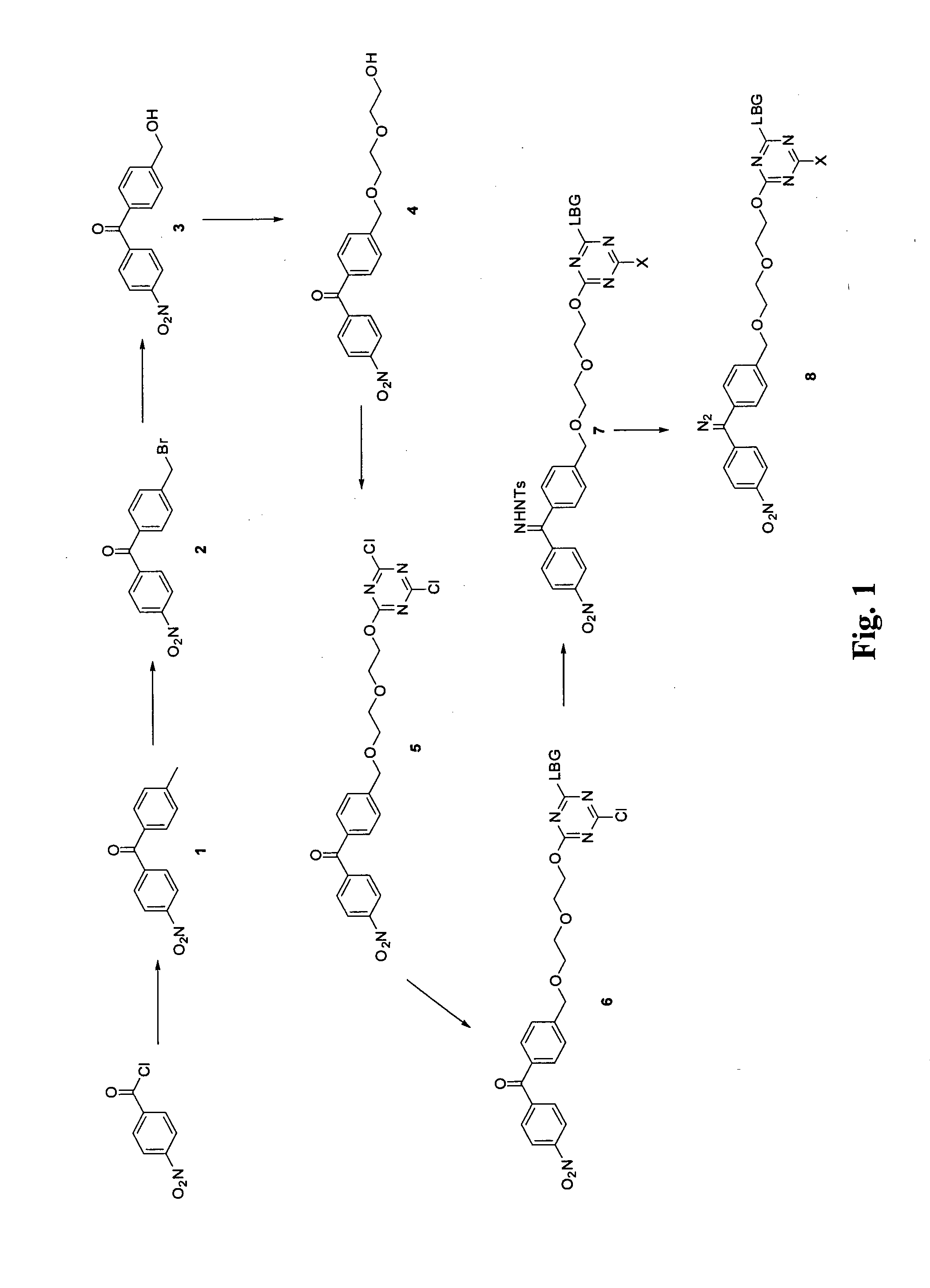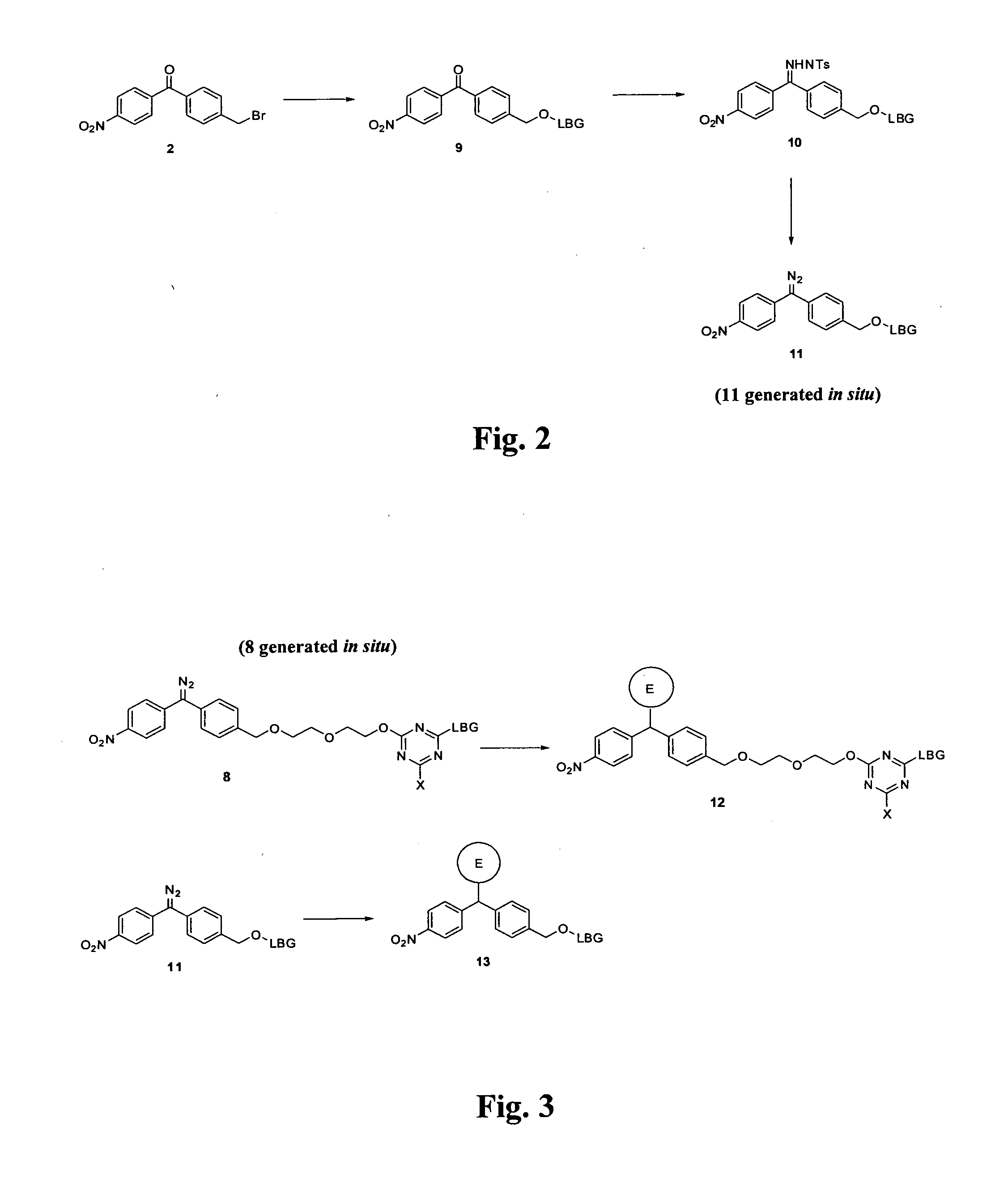Chemical agents capable of forming covalent 3-d networks
a chemical agent and covalent 3-d technology, applied in the field of compounds, can solve the problems of limiting the use of materials in challenging environments, preventing their use, and limited change in properties, so as to improve the thermal properties of coatings, alter the chemical nature, and achieve greater control
- Summary
- Abstract
- Description
- Claims
- Application Information
AI Technical Summary
Benefits of technology
Problems solved by technology
Method used
Image
Examples
example 1
Synthesis of Chemical Agents Capable of 3-D Network Formation
Route 1
Synthesis of Triazine Linked Diazomethane Locust Bean Gum, with Reference to FIG. 1
Synthesis of 4-methyl-4′-nitrobenzophenone (1)
[0916]4-Nitrobenzoyl chloride (5.00 g, 26.0 mmol, 1 eq) was suspended in toluene (10 mL) and the cloudy yellow mixture was cooled to 0° C. in an ice / water bath. Aluminium trichloride (4.50 g, 33.7 mmol, 1.25 eq) was added portionwise over a period of 20 min and the mixture was allowed to warm to room temperature. After stirring at room temperature for 2 hr HPLC indicated that the starting material had been consumed. The reaction was quenched by pouring onto an ice / 1 M HCl solution where the product precipitated out as a yellow solid. The aqueous mixture was extracted with ethyl acetate (3×50 mL). The organic washings were dried over magnesium sulfate and concentrated under reduced pressure to give a yellow solid. The yellow solid was recrystallised from 2-propanol to give 4-methyl-4′-nitro...
example 2
Attaching Hydrophilic Polymers onto 3-Dimensional Surfaces, with Reference to FIG. 3
Attachment to the LBG to a Fluoroecsent Particle with Reference to FIG. 3
[0933]The functionalised Locust bean gum (100 mg) was suspended in methanol (15 mL) and triethylamine (0.5 mL) was added turning the yellow suspension a bright orange colour. The solvent was then removed under reduced pressure to yield the product (11). The direct linked diazomethane-LBG (11) was mixed with the 10 micron diameter fluorescent particles (1% w / w of polymer wirtn regard to the particle) and sonicated to ensure they were thoroughly mixed. The mixture was heated under reflux for 2 hr
Simulated Wash to Show Increased Deposition of Encapsulates onto Cotton Wool
[0934]The encapsulate suspension was added to a standard basic buffer (30 mL, 0.1 M sodium carbonate / sodium hydrogen carbonate). The mixture was shaken and divided into two vials. Cotton Wool was added to the first vial and the mixture was shaken at 500 rpm for 45 ...
example 3
Attachment of a Coating to a Surface
Experiment 1
[0936]A layer of tris-diazo 19 dissolved in methyl ethyl ketone (3% w / w) was applied to the substrate using a grade 1 K bar and allowed to dry. Then a layer of poly(ethyleneimine) in methanol (50% w / w) was applied using a grade 1 K bar and allowed to dry. The sample was then heat cured in an oven at 120° C. for 10-15 mins.
PUM
 Login to View More
Login to View More Abstract
Description
Claims
Application Information
 Login to View More
Login to View More - R&D
- Intellectual Property
- Life Sciences
- Materials
- Tech Scout
- Unparalleled Data Quality
- Higher Quality Content
- 60% Fewer Hallucinations
Browse by: Latest US Patents, China's latest patents, Technical Efficacy Thesaurus, Application Domain, Technology Topic, Popular Technical Reports.
© 2025 PatSnap. All rights reserved.Legal|Privacy policy|Modern Slavery Act Transparency Statement|Sitemap|About US| Contact US: help@patsnap.com



